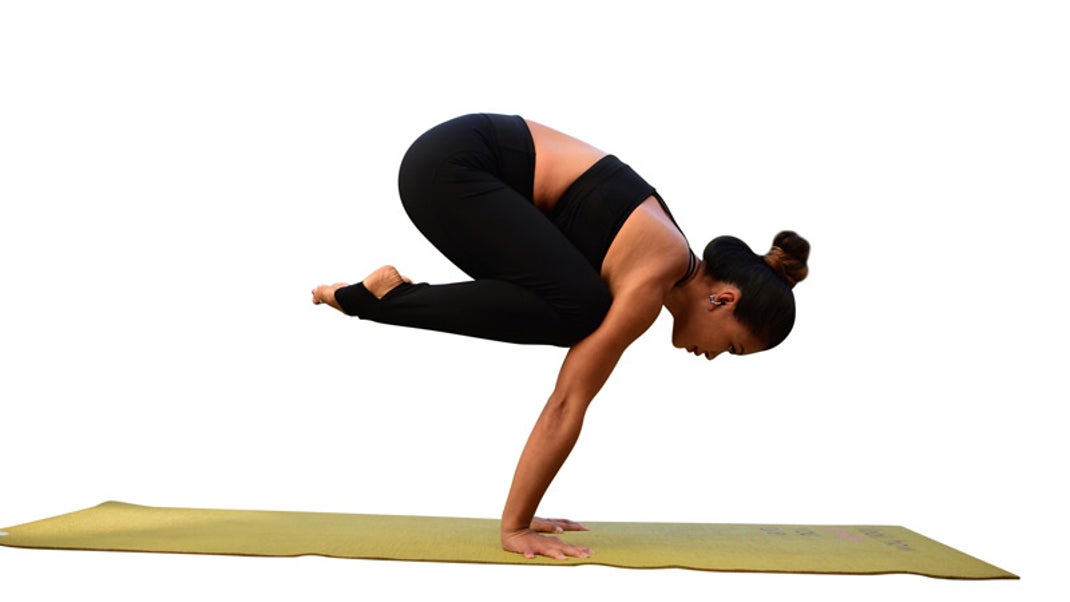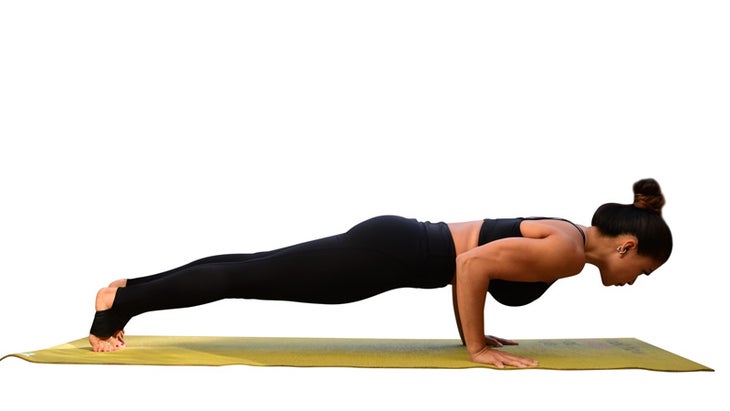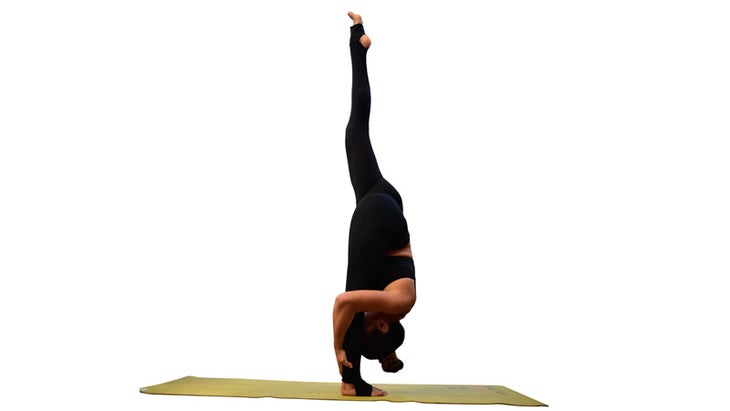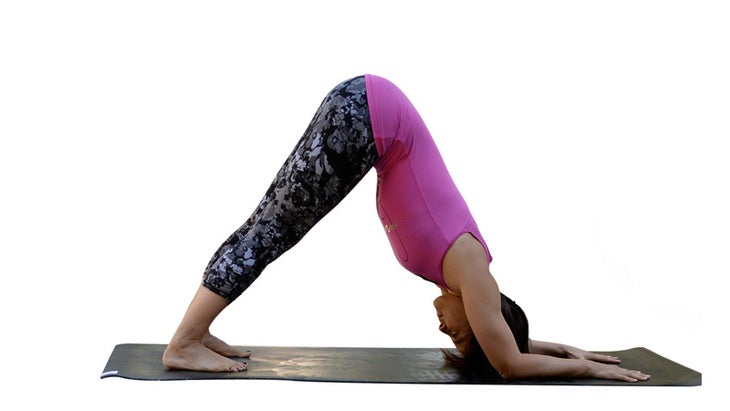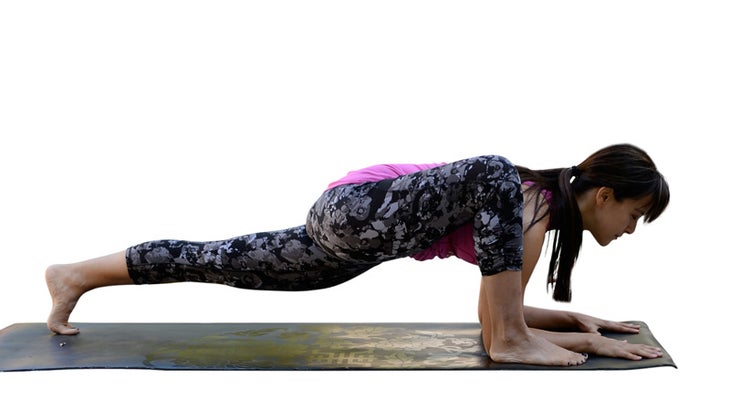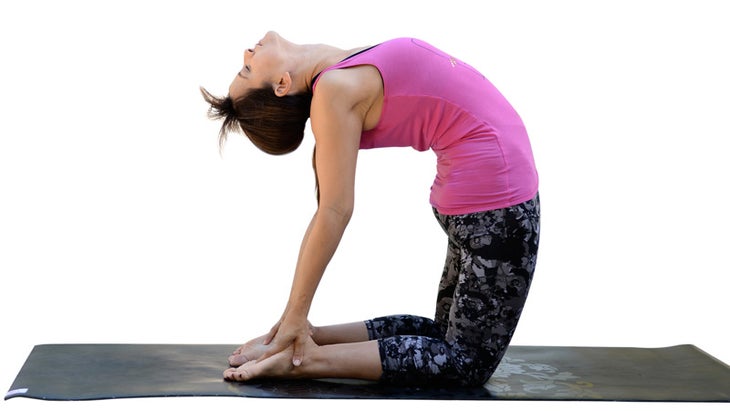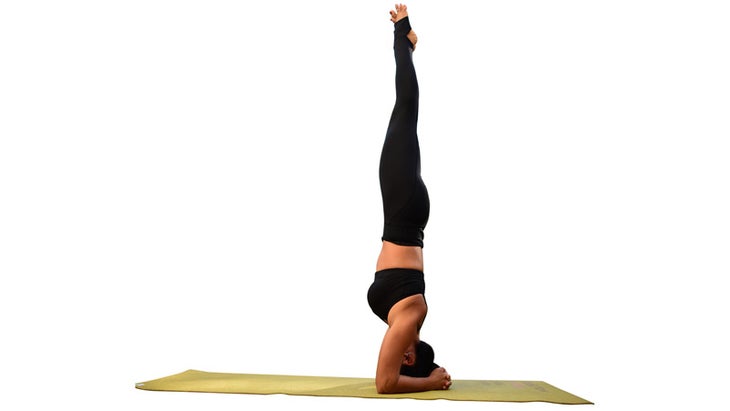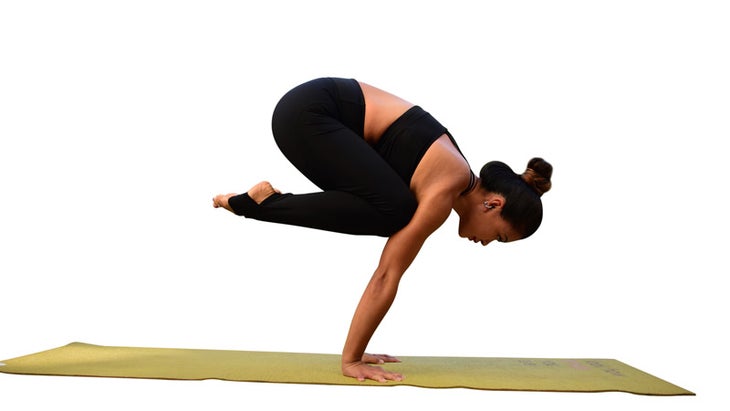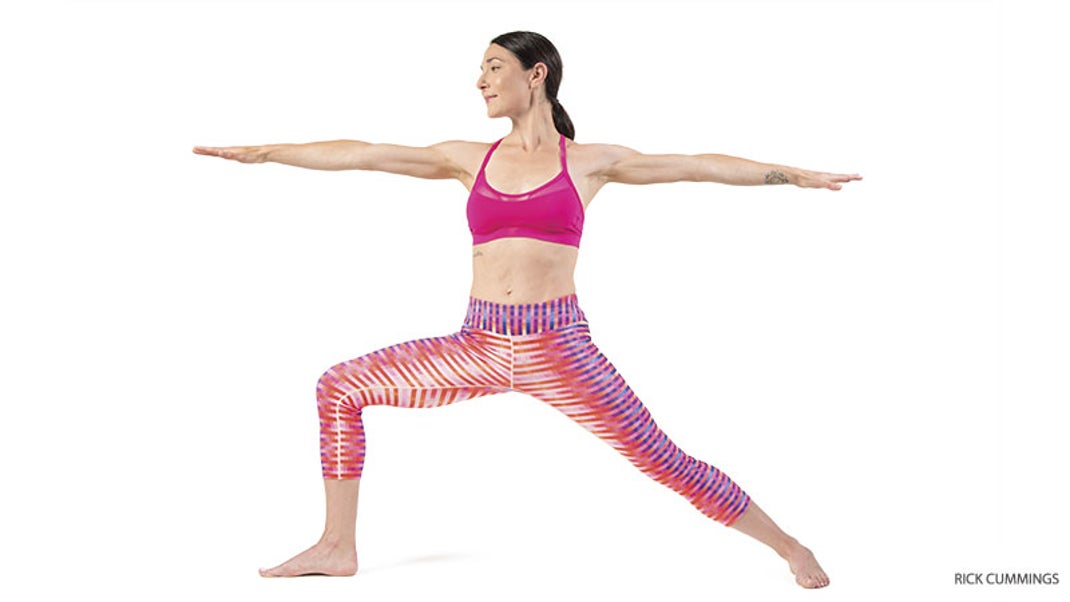The two Fit Moms are back with another blog post that is sure to make you want to lace up your sneakers and get started. You can do these poses at home or in a studio, and they’re perfect for beginners!
From haunted houses to horror movies, the natural tendency in life is to avoid the things we dread. This makes perfect sense (especially around Halloween), but not everything we fear is worth avoiding.
In the case of yoga poses, there are plenty of uncomfortable postures that offer amazing benefits. We at Two Fit Moms encourage you to step outside of your comfort zone and overcome these feelings of dread. By challenging yourself and confronting your fears, you will step off your mat feeling empowered and ultimately deepen your practice.
Four-Limbed Staff Pose (Chaturanga Dandasana)
Chaturanga Dandasana is a foundational yoga pose that will increase your overall strength and build the stability required for arm balances and inversions. There’s no need to dread this pose, as there is always a modification to lessen the intensity.
If you are in the process of building upper body strength, feel free to lower your knees to the mat to maintain good form. For the full expression of the pose, begin in Plank Pose. Keep your elbows pinned to your sides, engage your core muscles to create a straight line from head to heel, and then slowly shift your body forward and bend your elbows until you create a 90-degree angle with your arms.
In most vinyasa flow yoga classes, you will only hold this pose for a breath or two at most. At home, practice building the strength to hold Chaturanga for 5 breaths. For an added challenge, press into your hands to return to Plank when you’re finished.
Standing Split (Urdhva Prasarita Eka Padasana)
For anyone with tight hamstrings, Standing Split is an effective and challenging posture.
Rather than focusing on lifting the leg as high as possible, get the greatest benefit from this hamstring stretch by lowering the leg and internally rotating the hip so all five toes of the lifted foot point down toward the mat.
Keep your fingertips resting lightly on the ground or test your balance by bringing the hands to the back of the standing leg. Keep the muscles in both legs engaged for 5 breaths, then switch sides.
Dolphin Pose
Strengthen your shoulders and tone your core as you stretch your hamstrings in Dolphin Pose (a Downward-Facing Dog variation on the forearms).
Try the pose with the soles of your feet flat on the ground, then walk your feet in and rise onto the balls of your feet as you stack your hips above your elbows. Stay in each version of this pose for 5 breaths.
Supported Shoulderstand (Salamba Sarvangasana)
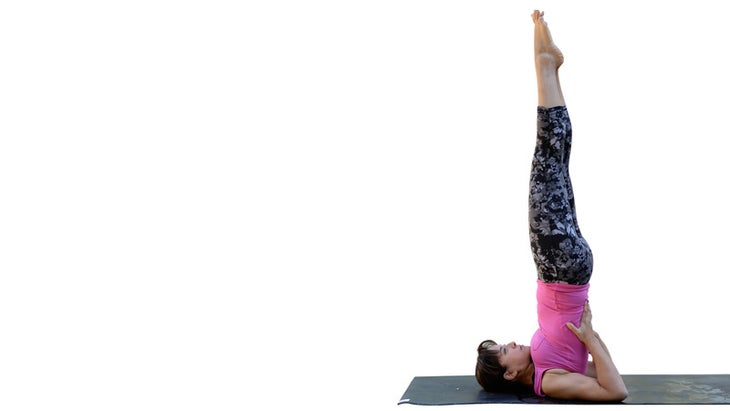
While many yoga inversions are frightening for beginners, Supported Shoulderstand happens to be a stable inversion that is accessible to yoga practitioners of all levels.
Place a folded blanket or two underneath the upper back and shoulders for additional comfort, and keep your hands on your back for support. If you have any history of neck or back dysfunction, try a milder variation of the pose where the entire length of the back remains flat on the ground. In both variations, straighten the legs toward the sky and hold the pose for 5 breaths.
Lizard Pose (Utthan Pristhasana)
Lizard Pose is a strengthening hip opener that can be modified to increase or decrease the intensity of the stretch.
From Downward-Facing Dog, step your right foot to the outside of the right hand. Feel free to stay on the hands or increase the intensity of the pose by lowering onto the forearms or onto yoga blocks underneath the forearms. Lowering the back knee to the ground is another option.
Whichever variation you choose, avoid rounding the upper back by focusing on lifting the chest. Squeeze your right thigh inward, and then try rolling onto the outer edge of your foot. Take 5 deep breaths, then practice on the other side.
Camel Pose (Ustrasana)
Strengthen the back, stretch the shoulders, and practice your deep breathing in this chest-opening pose.
To begin, place palms against the lower back with the fingers pointing downward. Support the lower back as you lift the chest skyward. Focus on taking deep, even breaths through the nose.
Keep your thighs perpendicular to the floor. If you are ready for a deeper stretch, reach back for your feet. If the full expression of the pose is too intense, try tucking the toes. Hold the pose for 5 breaths before slowly rising and sitting back onto the heels.
Supported Headstand (Salamba Sirsasana)
Although inversions tend to pose that many yoga practitioners avoid out of fear, a Supported Headstand with its wide, stable base is a good place to start.
Interlace your fingers and place your forearms on the ground with the elbows shoulder-width apart. Avoid dumping too much weight onto the top of your head by pressing firmly into the forearms and keeping the neck long.
If you are a beginner, practice with the safety of a wall behind you. In addition to strengthening the body and calming the mind, inversions will leave you feeling empowered and ready to take on the world. Begin by holding this pose for just a breath or two, and with practice, build the endurance to hold for 5–10 breaths.
Crow Pose (Bakasana)
If you are ready to dabble in the world of arm balances, Crow Pose is the perfect place to start. You will strengthen your arms and wrists and improve your stability by strengthening your core muscles.
If you are struggling to place your knees high on the arms near the armpits, try using a yoga block as a perch. Squat on top of the block to gain a few inches of height and make the pose more accessible. Although the knees do rest on the backs of the arms, remember to squeeze your thighs inward.
The squeezing action is key to creating the necessary tension required to stay balanced in this pose. If you dread this pose because you are afraid of falling forward, practice with a pillow on the floor in front of you. Start by balancing for just a breath or two, and build the strength to hold this pose for 5–10 breaths.
Conclusion:
If you’re like most people, you probably dread a few poses in your yoga practice. But with a little bit of exploration and modification, these poses can become much more approachable – and even empowering. In this post, we shared eight yoga poses that tend to be dreaded by many yogis, along with some modifications to make them more accessible. Give them a try!
